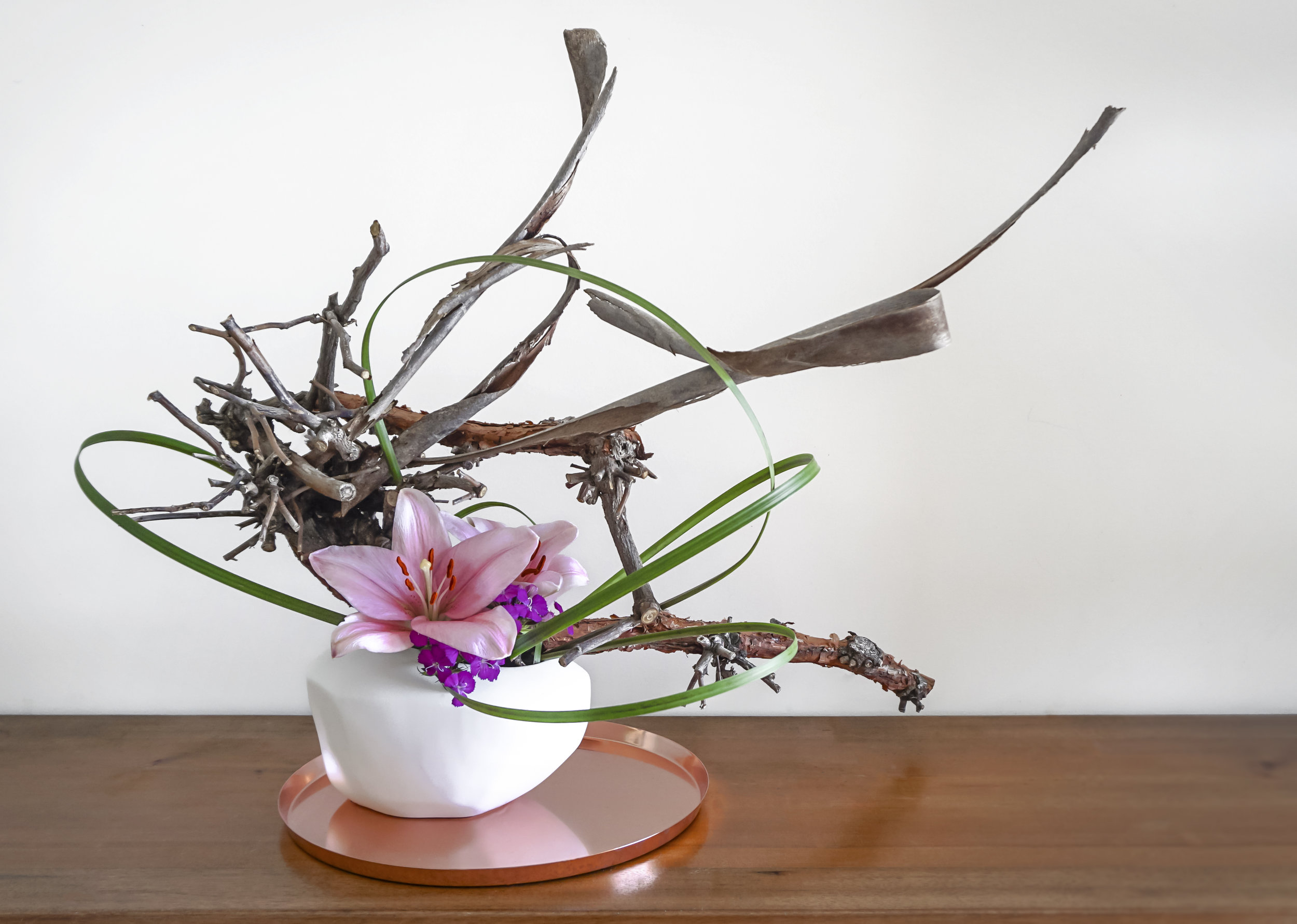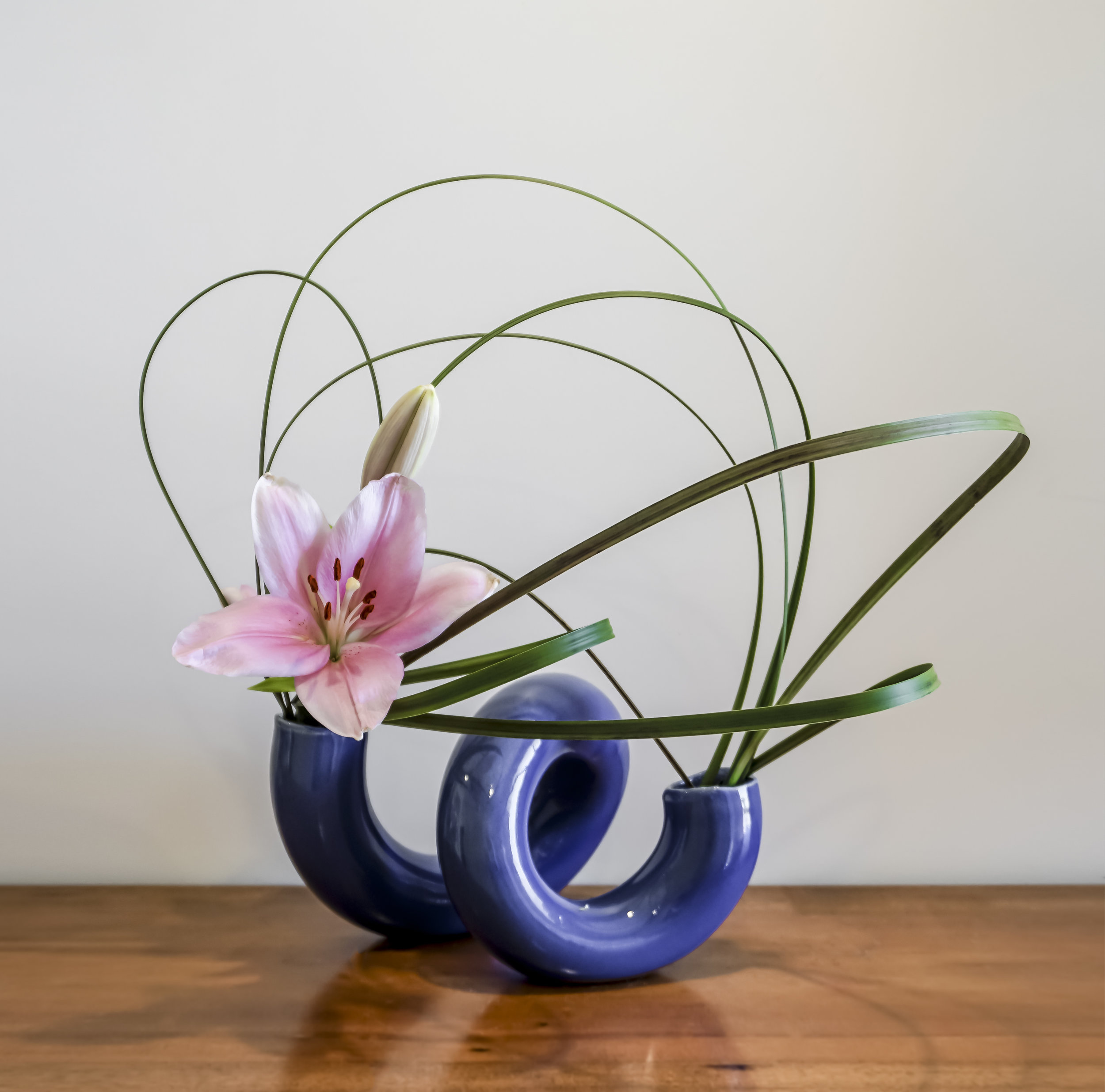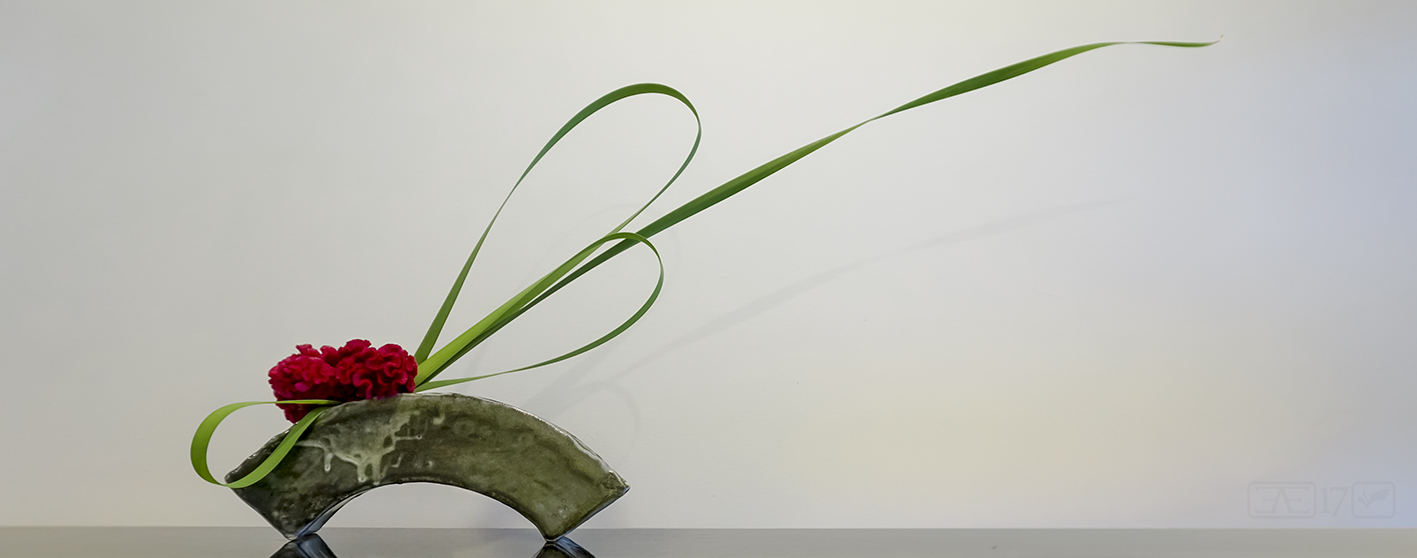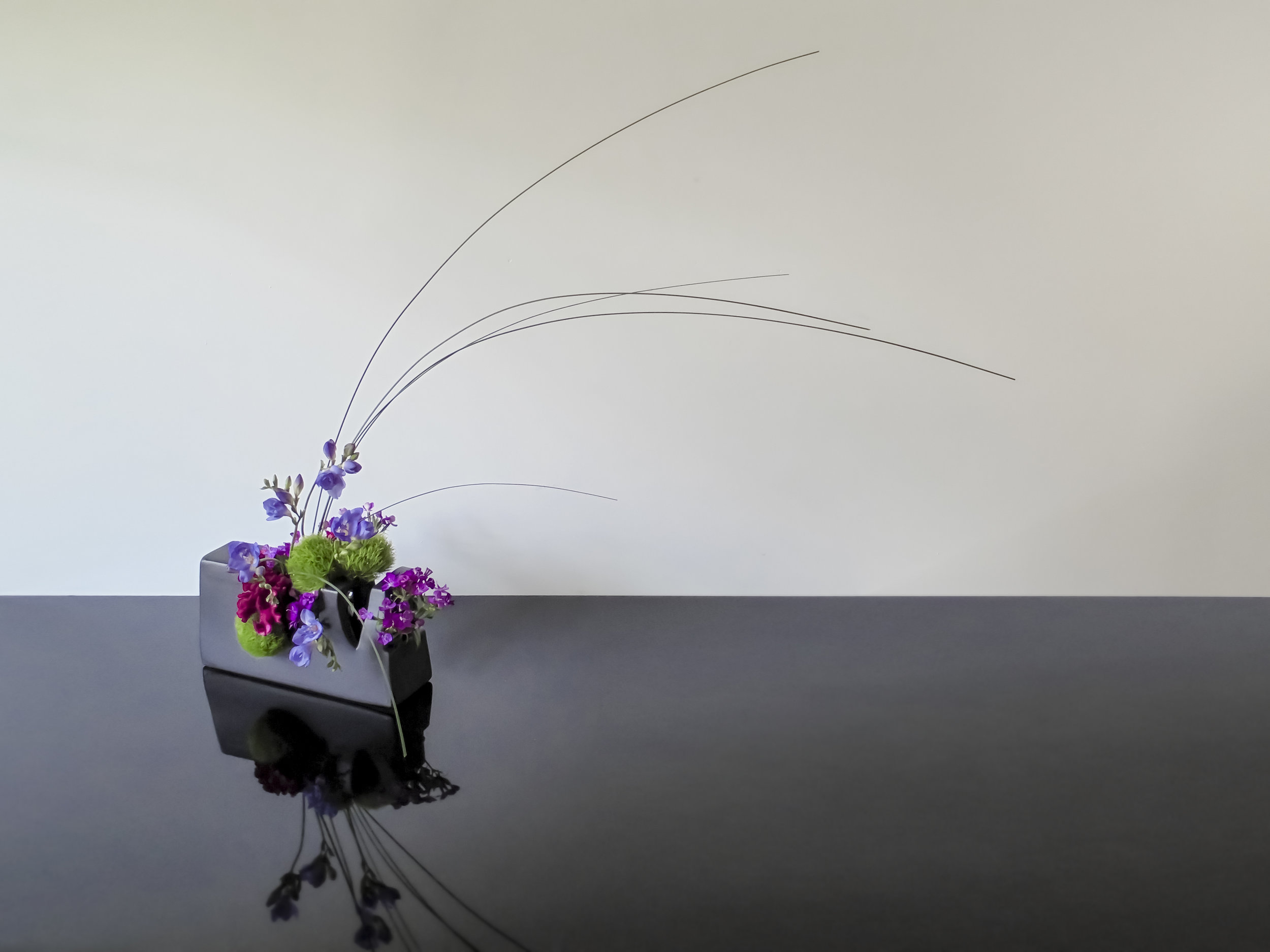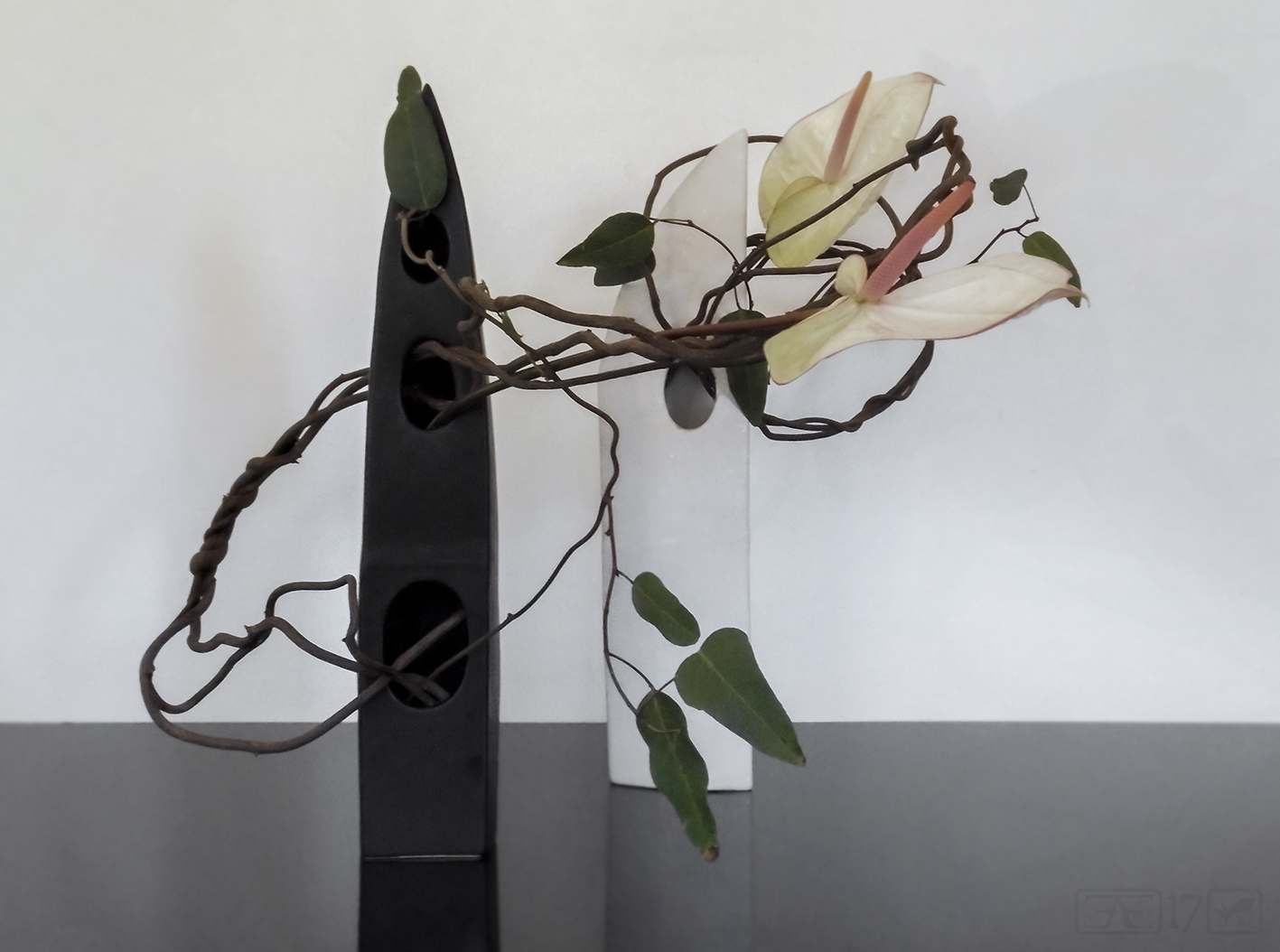Most recently I was very fortunate to attend a weekend seminar and accompanying workshop in Sydney given by esteemed visiting Sogetsu Master Ms Misei Ishikawa. This was such a pleasure to attend and I feel that I learned a great deal from the experience. The intention of the seminar was to properly introduce Sogetsu Ikebana practitioners to the new Book 5 Textbook. It will soon be the case that if a teacher has not attended this or a similar workshop, their teaching will not be recognised officially by the school headquarters in Japan. So naturally it was very important to attend! The aim was to unify some specific skills among teachers to ensure that they could give their students the best possible learning experience in the future.
On the first morning there was a video lecture from the Iemoto of the school Ms Akane Teshigahara which was very inspirational as well as talks from Master Ishikawa about every lesson in the entire Book 5 Textbook. To say it was thorough is an understatement! In the afternoon session there was another video lecture from the Iemoto followed by practical demonstrations by the master which was again very inspiring! An informal dinner at a local restaurant followed.
The next day was a day of workshops where we were able to show off our own practical skills for the Master and receive some valuable feedback. In part one we were asked to assemble a free standing structure from some provided branch material. We could assemble using wire, nails, screws etc but the fixings that we used had to not be obviously visible. A fun challenge to be sure but one that I was able to meet. Part Two required us to add a container and turn the branches in to a different position than was initially used and to then create a completed arrangment adding foliage and plant material. The results around the room were so massively varied it was a wonderful demonstration of the different things that could be done using these few techniques. Here is a photograph of what I was able to achieve.









